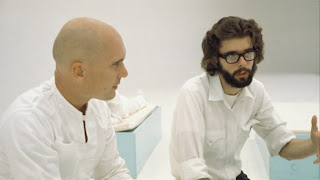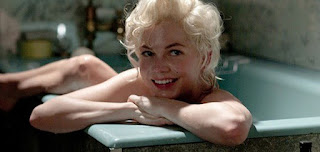By Steven Rosen
(This Denver Post interview originally ran in 1998, when Mamet was at Sundance Film Festival to promote The Spanish Prisoner. In light of renewed interest in silent movies because of The Artist, I have put it up on this Website, as it seems timely.)
David Mamet is a master of language - his award-winning scripts crackle with ominously witty, highly original dialogue. So it's surprising that he believes the best movies are the silent ones.
"It works better without words,'' the playwright and screenwriter says, relaxing in a small hotel conference room at Park City, Utah, the night after his new film "The Spanish Prisoner'' showed at this year's Sundance Film Festival.
"Hitchcock derogated dialogue films - he said they were just pictures of people talking.
"What I'm hired to do (as a screenwriter) is describe pictures,'' he explains. "The question is how to tell the story best at any given point. The answer always is to see if I can do it without words, because then I know I'm doing it right. But sometimes I'm not smart enough. But that's my ideal.''
Interviewing Mamet is like talking to a professor about language and literature. He is opinionated and authoritative, yet not dismissive or conceited. He has obviously thought hard about the process of his work, and enjoys the opportunity to analyze it.
"The Spanish Prisoner'' is entirely Mamet's film. He conceived of the idea, about an elaborate confidence game designed to bilk the inventor of a cryptic "Process'' out of his sole copy of the top-secret formula.
Mamet wrote and directed the film. His wife, Rebecca Pidgeon,co-stars with Campbell Scott, whose lean build and forceful, no-nonsense articulateness are reminiscent of Mamet himself. Also featured are Ben Gazzara and, as an allegedly wealthy businessman who gains the confidence of Scott's inventor, Steve
Martin.
"The Spanish Prisoner'' is a thriller, but not in the style of, say, "Face/Off'' or "Air Force One.''
"This is a more traditional style of light thriller - or Hitchcock thriller,'' Mamet says. "We're meant to understand it as an entertainment, which is meant to delight us, rather than as an exploration of violence.''
If there is a movie role model, it is Stanley Donen's devilishly clever "Charade,'' a 1963 film starring Audrey
Hepburn and Cary Grant. There also, however, are many literary influences. "I've done a lot of reading on the literature of con games for a long time - a whole strain of Western literature is taken off of
confidence games,'' he says.
"Thomas Mann wrote one that's called "Confidence Man.' (Herman) Melville wrote 'The Confidence Man.' It's just picaresque literature. It's a very strong element of our Western canon.
"This kind of literature rips the mask of hypocrisy from Western civilization,'' he says. ""It says those institutions and things which we believe in are really peopled by scoundrels and knaves and people no better
than you and me.''
Mamet assures that there is a real confidence game called the Spanish Prisoner. Still, it is a relatively obscure and allusive reference for a title. That risks confusing the potential audience.
"My theory on titles is that they should be provocative,'' Mamet says. "They should make you ask the question, 'Golly, what does that mean?' rather than telling you. Then you're provoked to go on and see the movie.''
Hollywood tends to see things differently, and that perturbs Mamet. He discusses the topic of effective movie titles as if he were critiquing a poem.
""I just did (wrote) a movie called 'Bookworm' about these two guys lost in Alaska,'' he explains. ""At the last minute the studio decided people didn't know what that meant, and decided to call it 'The Edge,' which is a kind of generic title.''
Mamet argued. ""Why is that the title to that movie? Nobody knows. They said that nobody knows what the title 'Bookworm' means. But if you take the title 'Bookworm' and put it next to a picture of a big snarling bear, somebody might get the idea something provocative is going on.''
Mamet realizes that the studio probably thought moviegoers would respond to "The Edge'' as an "edgy'' word rather than as a flat, undescriptive one. "They thought someone else migh think that word was provocative - someone in effect stupider than themselves,'' he says. The movie, released last fall, was a
big flop.
This time, Mamet chose his title and stayed the course. "I'd rather make my own mistakes than make mistakes figuring out what someone else might think.''
Mamet, who also received an Academy Award nomination for his work on the "Wag the Dog'' screenplay, has many new projects planned both for theater and movie. Clearly, despite his stated preference for silent films, he enjoys writing dialogue for the screen.
"I always wished I was a handyman - a guy who could fix the garage door, tune a car, rehang the shutter,'' he says. "I'm not good at that stuff at all. But I always admired those people who could take a few basic principals of construction repair and renovation and apply them to many different things.
"On the other hand, I hope that's what I do in movies and plays - take a few very basic principals of construction, renovation and design and try to apply them to various tasks.''










